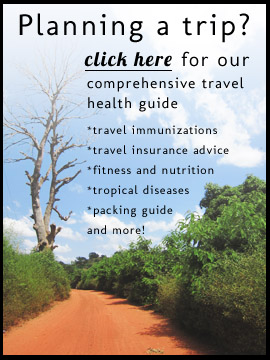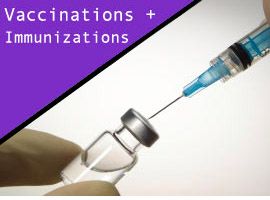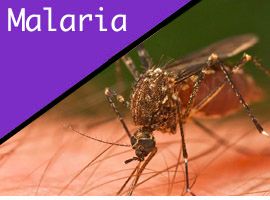Each year, it is estimated that nearly 450 million sexually transmitted infections occur across the globe. In other words, these are some of the most common infections worldwide. Travelers, who can easily be exposed to partners of a variety of different backgrounds, need to be particularly aware of the risks.
In this post, we will talk about some of the more virulent STDs, what you can do to prevent and treat them, and in what circumstances you are particularly at risk.
What is the difference between STIs and STDs?
The acronyms STD (“sexually transmitted disease”) and STI (“sexually transmitted infection”) are often used interchangeably, but there is a significant difference between the two. A sexually transmitted disease indicates that symptoms are present. A sexually transmitted infection, however, indicates the presence of infection, but acknowledges that symptoms may not be apparent. This is an important distinction — in many cases, symptoms of STIs do not appear right away, or in some cases, ever.
General prevention strategies
You can of course stay abstinent — that’s the safest bet. But it would be unrealistic to expect all travelers to abstain from sex. The two most effective ways you can prevent STIs outside of abstinence? Safe sex and mindful partner selection. The key ingredient to safe sex is using adequate protection — namely, a latex condom for guys or a female condom for women. When it comes to partner selection, the ideal partner is someone that you know well and one that is not promiscuous. In other words, a prostitute does not fit the bill.
STIs that are of particular concern
These STIs are of particular concern either because of their prevalence or because of the severity of their symptoms.
Gonorrhea
Gonorrhea is of particular concern for two reasons: it is prevalent and it can be asymptomatic. In fact, it is estimated that 4 out of 5 women who are infected with gonorrhea have no symptoms. This means that it is much easier for them to transmit the infection. The infection is spread through unprotected vaginal, anal or oral sex. For guys, symptoms manifest more frequently and typically involve pain and burning during urination and more frequent trips to the bathroom. When symptoms do manifest for women, they are typically more involved and can involve pain and swelling in the abdominal area, fever, and even vomiting.
The good news is that gonorrhea is treatable with a course of proper antibiotics. If you are at all concerned you have gonorrhea, either because you are exhibiting symptoms or because you have learned that a previous or current partner is infected, you need to go to a health clinic as soon as possible for diagnosis and treatment.
Chlamydia
Chlamydia, like gonorrhea, is caused by a bacterial infection. It is far more common than gonorrhea, however, up to 5 times more common actually. The infection is spread primarily by unprotected anal or vaginal intercourse. In rare circumstances, it can be spread by unprotected oral sex. For both men and women, symptoms are similar to gonorrhea, but once again, symptoms often are not present. With respect to chlamydia, up to half of men who are infected do not experience symptoms. A distinction with gonorrhea, however, is that chlamydia can cause the anus to itch or bleed and it cause anal discharge and diarrhea (fun, right?).
As with gonorrhea, chlamydia is treatable with a course of antibiotics. If you are concerned that you are infected, you need to go to a health clinic to get proper diagnosis and treatment. If chlamydia persists untreated it can turn into more chronic and more problematic conditions, so this is not something to sleep on.
HIV/AIDS
One of the more serious STDs on this list, HIV, which is the infection that leads to AIDS, still lacks a cure. It can be transmitted in more ways than many other STDs as it doesn’t just involve semen or vaginal fluid. It can also be transmitted via blood or breast milk. This is why clean needle use and treatment of mothers infected with HIV are particularly important issues. It’s important to note that male and female condoms provide adequate protection against HIV.
HIV often does not manifest symptoms immediately. In fact, in many cases it may be up to ten years before the symptoms appear. Even then, symptoms of HIV can be mild. They may include swollen glands, slight fever, muscle aches and fatigue. If HIV evolves into full blown AIDS, symptoms become much more severe and the disease can ultimately be fatal.
HIV is a treatable disease and treatment has come a long way in recent years. Patients often take a cocktail of drugs that helps keep their immune system from floundering. With these drugs, patients can live with the infection for many years without the development of AIDS. That said, these drugs can be expensive and they often have side effects.
HPV
The most silent STI on this list, HPV (Human Papillomavirus) often manifests zero symptoms. It’s because of this fact that at one point in their lives, it is estimated that half of men and perhaps more than 75% of women have the virus. Most infections of HPV go away on their own, but some persist, some can cause genital warts, and some can lead to increased risk of cervical and other cancers.
Because HPV is such a “silent” infection for so many people and because it is so prevalent, it is often asked what can be done to prevent it? There is a vaccine available that can confer a reasonable amount of immunity for many types of HPV. Also, use of female and male condoms can greatly reduce risk. In the case of HPV, however, even skin-to-skin contact can transmit the infection, so your best bet is to get tested yourself and insist that your partner does the same.
Herpes
Herpes is another common infection, and one that, like some of the others mentioned here, has the potential not to manifest symptoms. It comes in two varieties: oral and genital. Infection rates of oral herpes are very high and there is a good chance that many of you reading this have had a cold sore on your lip somewhere, which indicates this kind of infection. Genital herpes are not as common, but there are still a significant number of people who have this infection as well.
The infection can be spread by any skin to skin contact. A condom won’t help much here, because just touching can transmit herpes. The best way to avoid infection is to get tested yourself and have your partner do the same. Beyond that, if you were having a sexual encounter with someone who had herpes, it is imperative that it is not during an outbreak where sores are present — this greatly increases the chances of infection. Once infected, you have herpes for life, unfortunately, but treatment is available and thankfully, this is not a life-threatening infection.
Hepatitis B
A type of liver infection, hepatitis B can be avoided with an effective vaccine, which is available and often given as part of a routine course of vaccinations in many developed countries. If infected with hepatitis B, symptoms often evolve from relatively mild (fatigue, nausea, loss of appetite) to more severe (jaundice, severe abdominal pain, dark urine) over time.
While there is no cure for hepatitis B, the disease often goes away on its own in several weeks. The recovery rate is roughly 90%. Your best bet is to get vaccinated, but barring that, you should make sure to have protected sex as condoms do confer an adequate amount of protection in this case.
For more information on particular STIs and STDs, Planned Parenthood has a good primer.
Why this is important for travelers
Travelers can be more prone to engage in casual or short-term sexual relationships. Depending on where you are traveling, the local atmosphere may in fact lend itself to these encounters. It’s important to be conscious of the consequences, however, and take the necessary steps to guard against any kind of STI. Priorities: always have protected sex and be careful when choosing who you engage sexually. This cannot be overstated. And if you do suspect that a previous partner had an STI or if you yourself begin showing signs of symptoms, do not hesitate to go to a clinic and get tested. There are new services such as STDCheck.com available now that allow you to order a test online also. In fact, if you have never been tested before, you might as well go ahead and get that done now.
Photo credit: flickr user












{ 0 comments… add one }